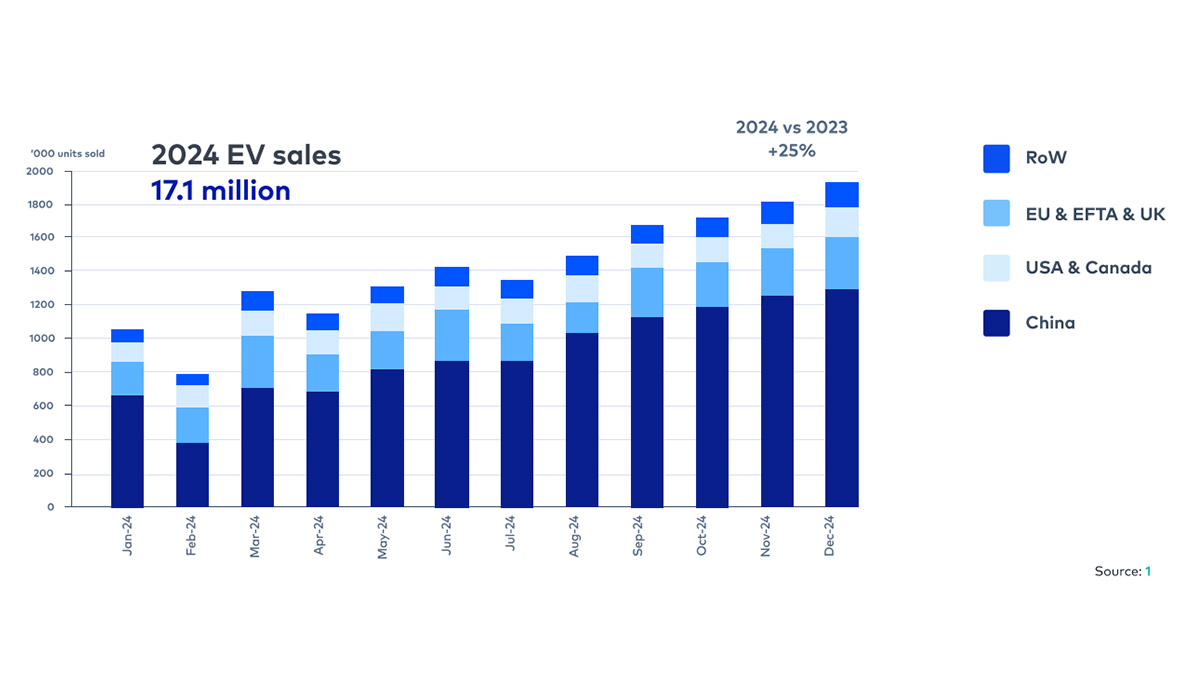
As the adoption of electric vehicles continues to grow across Europe, charging infrastructure is under more pressure to keep up. By 2025, it’s clear that EV charging is no longer just a convenience—it’s a key part of energy strategy, real estate planning, and public service design.

At Workersbee, we work closely with businesses, fleets, and infrastructure operators to develop EV charging systems that are both scalable and future-ready. This article shares practical insights into where the European market is heading and what B2B customers should consider next.
In 2025, two major EU policies are reshaping how charging infrastructure is planned and deployed:
AFIR (Alternative Fuels Infrastructure Regulation) is setting firm requirements for fast charger availability along the main highway network. For example, by the end of 2025, charging pools must deliver at least 400 kW of total output.
EPBD (Energy Performance of Buildings Directive) introduces new rules for commercial properties, requiring pre-installed cabling in new or renovated buildings. This applies to offices, retail centers, and apartment buildings.
What this means: If your business is involved in real estate, parking, or fleet management, preparing now can reduce costs later and help ensure compliance with evolving standards.
EV drivers increasingly expect shorter charging times, especially when they’re on the go. From 2020 to 2024, Europe saw a significant expansion in its public charging network, with total charger installations increasing by more than threefold. Alongside this growth, the proportion of fast-charging units—those offering more than 22 kW—has gradually become a larger part of the network.
Some key developments:
Average charging speed across Europe now sits at 42 kW
Chargers delivering over 150 kW now account for close to one-tenth of the entire public charging infrastructure across Europe.
Countries like Denmark, Bulgaria, and Lithuania are seeing strong growth in fast DC installations
What this means: If you operate in a location with high vehicle traffic—such as retail sites, rest stops, or logistics hubs—offering fast charging can directly boost usage and customer satisfaction.
Here’s a simple overview comparing EV charging progress across selected countries in 2025:
|
Country |
Chargers per 1,000 People |
Avg. Speed |
BEVs per 1,000 People |
DC Rollout Trend |
|
Netherlands |
10.0 |
18.4 kW |
32.6 |
Slowing down, mostly AC |
|
Norway |
5.4 |
79.5 kW |
148.1 |
Highly mature |
|
Germany |
1.9 |
43.9 kW |
24.1 |
Fast growth in HPC |
|
Italy |
1.0 |
33.9 kW |
5.1 |
Developing market |
|
France |
2.3 |
33.2 kW |
20.2 |
Needs faster options |
|
Spain |
0.9 |
31.0 kW |
4.4 |
Picking up pace |
Data compiled from publicly available sources, interpreted by Workersbee
Recent surveys of EV owners across Europe reveal a few consistent patterns:
Home charging remains the most common method, but nearly 1 in 3 charging sessions still happen in public.
Price and convenience are the two main factors influencing public charging decisions.
70% of long-distance EV drivers plan their charging stops in advance, often choosing locations with amenities.
What this means: Well-placed public charging stations—especially those offering food, rest areas, or shopping—can create value beyond just energy sales.
Installing high-speed chargers is not only about the hardware—it also depends on available grid capacity. In some regions, grid upgrades can take years and come with high costs.
To reduce these risks, B2B operators are exploring:
Battery storage to smooth peak demand
Energy management systems (EMS) for load balancing
Modular hardware that supports phased expansion
At Workersbee, we provide charging solutions designed to work efficiently even in power-constrained locations, helping businesses avoid unnecessary upgrades and delays.
We offer a full line of charging solutions tailored for commercial and industrial applications:
Smart AC and DC chargers (7 kW to 350 kW)
Compatible with Type 1, Type 2, CCS1, CCS2, NACS connectors
Load balancing, peak shaving, and energy monitoring
Ready for future features like V2G (vehicle-to-grid)
We believe EV charging should be simple, reliable, and scalable. Whether you’re installing your first station or managing multiple sites, we’re here to help you every step of the way.
If you’re planning to expand your charging network, launch a new location, or just need help understanding what hardware fits your goals, our team is ready to support you.
Get in touch with us for expert advice and product recommendations tailored to your region and business type.